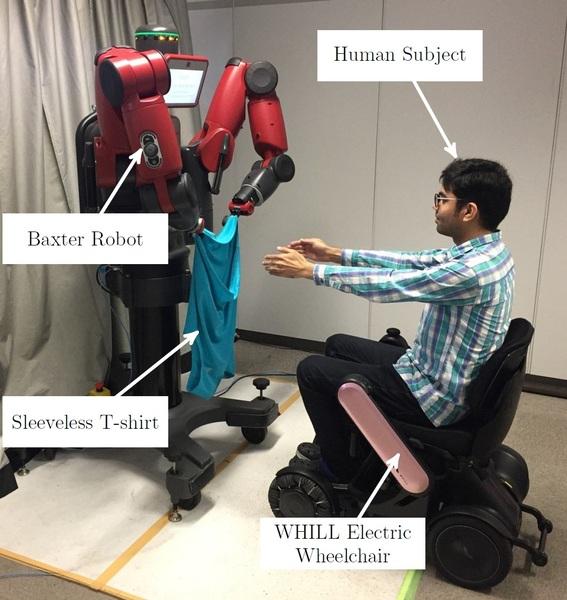In rapidly aging societies, robotic solutions for clothing assistance can significantly improve the quality of life of the elderly while coping with the shortage of caregivers. Previously, we proposed a framework for the same by employing imitation learning from a human demonstration to a compliant dual-arm robot. As the robot has a limited workspace, this framework involves a manual movement of the wheeled chair by pushing it while coordinating with the robot to stay within the workspace of the robot. To avoid the manual push and coordination, we facilitate the automatic movement of the chair based on the trajectory of the robot’s dual arms. In this paper, we present an approach for the collaboration of an electric wheelchair and a humanoid robot to achieve the clothing assistance task. Our approach incorporates Manifold Relevance Determination (MRD) to learn an offline latent model from the simultaneous observations of the clothing assistance task as well as the movement of the wheelchair. We trained and tested the latent model on different human subjects by dressing a sleeveless T-shirt. Experimental results verify the plausibility of our approach. To the best of our knowledge, this is the first work addressing collaboration between wheelchair and robot to perform clothing assistance.
Video

